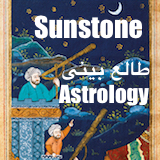New Lines Magazine:
Asef Bayat
Asef Bayat is an author and professor of sociology and Middle East studies at the University of Illinois Urbana-Champaign
“Everyone should immediately evacuate Tehran!” posted President Donald Trump on June 16, 2025. Just like that — in five blunt words. For those of us from Tehran, my hometown, the message was shocking in its coldness and detachment. It came after days of relentless Israeli bombardment across Tehran and other cities, ostensibly aimed at dismantling Iran’s nuclear capabilities — even while International Atomic Energy Agency (IAEA) chief Rafael Grossi and Trump’s own director of national intelligence, Tulsi Gabbard, had confirmed there was “no proof” Iran was building a nuclear bomb.
When the dust settles, Iranians will undoubtedly question the wisdom behind the regime’s nuclear ambitions and “anti-imperialist” rhetoric — especially the staggering costs they’ve imposed on the country’s people and resources. But right now, the deeper outrage lies in the impunity that Trump’s words granted Israel’s war machine to violate Iran’s sovereignty, victimize civilians and dismantle the country’s infrastructure without constraint.
“Evacuate immediately? Where?” asked a friend in Tehran. “Do they even know where Tehran is? Have they ever wandered its streets or grand bazaar to feel its vibrant life?” Tehran isn’t just a dot on a map. It’s homes, hospitals and offices. It’s schools, markets, weddings and funerals. Tehran is a city of around 10 million people, pulsing with interaction, energy and the tempo of life. Just take the subway and step off at any station and you’ll encounter signs of people wanting to live: a patch of grass where families picnic, a cafe buzzing with young women and men, barefoot children playing with a plastic ball in sheer delight, or my old neighborhood, Ekhtiarieh, where retired men gather on park benches, browsing newspapers.
Tehran bears marks of fatigue from the decades spent building itself into what it is today. Once, in the late 18th century, a modest enclave in the shadow of the pleasant Alborz Mountains, it has grown into a sprawling metropolis, its streets choked with over 4 million vehicles and air pollution that ranks it alongside Dakar or Karachi in terms of livability. Yet Tehran is no ordinary city — it is charged with extraordinary politics and a spirit of resistance, shaped by a constant tension between what looks like a deep-rooted tradition and a wild modernity.
In the Western imagination, Tehran is often reduced to cliches: lofty minarets, echoing calls to prayer, bearded clerics and women shrouded in black — a city of mud-brick homes and narrow alleyways filled with large extended families. This is the Tehran of the 1991 movie “Not Without My Daughter.” But far from such Orientalist fantasies, the real Tehran is a modern megacity governed by a repressive religious-military regime that has long tried — and largely failed — to remake its cultural and spatial fabric.
Go to link










Comments